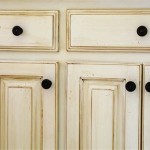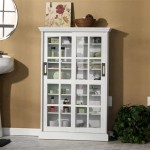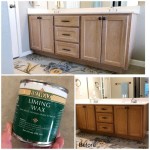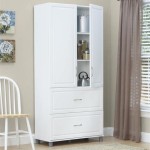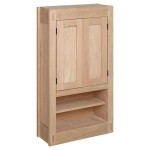Stripping Paint From Old Kitchen Cabinets: A Guide to Rejuvenating Your Space
Reusing old kitchen cabinets in a new build offers a sustainable and budget-friendly option for homeowners. However, restoring their appearance often involves removing layers of outdated paint. Stripping paint from old kitchen cabinets can seem daunting but with the right approach and tools, it becomes a manageable project that can breathe new life into your kitchen. This article explores the essential steps involved in stripping paint from old kitchen cabinets, ensuring a smooth transformation for your new build.
Understanding Paint Types and Stripping Methods
Knowing the type of paint on the cabinets is crucial for selecting the appropriate stripping method. Oil-based paints are typically more durable and harder to remove, while water-based latex paints are easier to strip. Additionally, identifying the number of layers can help you determine the intensity of the stripping process.
Several stripping methods exist, each with its advantages and disadvantages:
- Chemical Strippers: These are potent solutions that dissolve paint, making them effective for multiple layers. However, they require proper ventilation and safety precautions due to their strong fumes and caustic nature.
- Heat Guns: Using heat to soften paint allows it to be scraped off. This method is efficient for large areas but requires careful handling to avoid damaging the cabinet surfaces.
- Sanding: This involves using sandpaper to gradually remove the paint. It is a labor-intensive process but suitable for small areas and delicate finishes.
- Paint Scrapers: Used in conjunction with heat guns, these tools help to scrape off softened paint, providing a faster and more efficient removal process.
Essential Equipment and Safety Measures
Before embarking on paint stripping, gather the necessary equipment and prioritize safety:
- Gloves: Protect your hands from chemicals and sharp tools.
- Eye Protection: Goggles or safety glasses are essential to prevent paint debris or chemical splashes from entering your eyes.
- Respirator: When using chemical strippers, a respirator mask is crucial to avoid inhaling harmful fumes.
- Ventilation: Ensure a well-ventilated workspace, such as an open garage or outdoor area.
- Paint Stripper: Choose the appropriate type based on the paint type and your comfort level.
- Paint Scrapers: Various sizes and shapes are available, choose those suitable for the cabinet surfaces.
- Heat Gun: If using this method, opt for a model with adjustable temperature settings.
- Sandpaper: Different grits are necessary for sanding, start with a coarse grit and progress to finer grits.
- Drop Cloth: Protect the surrounding area from paint and debris.
- Cleaning Supplies: Use mineral spirits or denatured alcohol to clean the cabinets after stripping.
The Stripping Process: A Step-by-Step Guide
The following steps provide a general guide to stripping paint from old kitchen cabinets:
- Prepare the Cabinets: Remove hardware like handles, hinges, and doors. Clean the cabinets thoroughly to remove dirt, grease, and debris, using a mild detergent and water.
- Apply Stripper: If using a chemical stripper, apply it liberally to the painted surface, following the product instructions. Allow it to sit for the recommended time, typically 15-30 minutes, until the paint softens.
- Scrape the Paint: Use a paint scraper to remove the softened paint. Work carefully, applying gentle pressure to avoid damaging the wood.
- Heat Gun Application: If using a heat gun, direct the hot air onto the paint, keeping it moving to avoid scorching the wood. The heat will soften the paint, allowing it to be scraped off.
- Sanding: After removing most of the paint, sand the cabinet surfaces using various grits of sandpaper to smooth out any remaining residue and prepare for refinishing.
- Clean and Neutralize: After stripping, clean the cabinets thoroughly with mineral spirits or denatured alcohol to remove all traces of stripper and paint residue. If using a chemical stripper, neutralize the residue with a product specifically designed for this purpose.
- Dry Thoroughly: Allow the cabinets to dry completely before proceeding to sanding, priming, and painting.
Tips for Successful Stripping
Following these tips can improve the stripping process and achieve optimal results:
- Work in Small Sections: Strip paint in manageable sections to avoid the stripper from drying before it can effectively soften the paint.
- Test an Unseen Area: Test the stripping method on a hidden part of the cabinet to ensure compatibility with the paint and wood.
- Ventilation is Key: Open windows and use fans to ensure ample ventilation, especially when using chemical strippers.
- Protect Yourself and Your Workspace: Wear appropriate safety gear, including gloves, eye protection, and a respirator. Cover the surrounding area with a drop cloth to protect it from paint and debris.
- Be Patient: Stripping paint can be time-consuming and require multiple passes. Avoid rushing the process to ensure thorough removal and prevent damage to the cabinet surfaces.
Stripping paint from old kitchen cabinets is a challenging but worthwhile project. By understanding the different methods, using the proper equipment, and following safety precautions, you can successfully rejuvenate your cabinets and create a beautiful and functional kitchen space in your new build.

How To Strip Paint From Cabinets Angi

Avoid These Mistakes How To Paint Cabinets That Are Already Painted Grace In My Space
How To Update Your Kitchen Cabinets Without Replacing Them Real Estate U S News

A Step By Guide To Painting Kitchen Cabinets With Kilz Primer Blog

21 Diy Affordable Ways To Redo Kitchen Cabinets Extra Space Storage

How To Paint Old Kitchen Cabinets Save Yourself 1 000s Builds By Maz

How To Paint Kitchen Cabinets Best Color Ideas Cost

Cabinet Refinishing Guide

How To Fix A Bad Kitchen Cabinet Paint Job The Wood Whisperer

Budget Kitchen Renovation With Diy Shaker Painted Cabinets I
Related Posts



